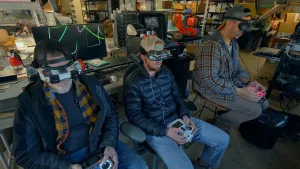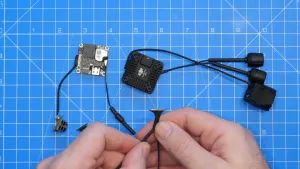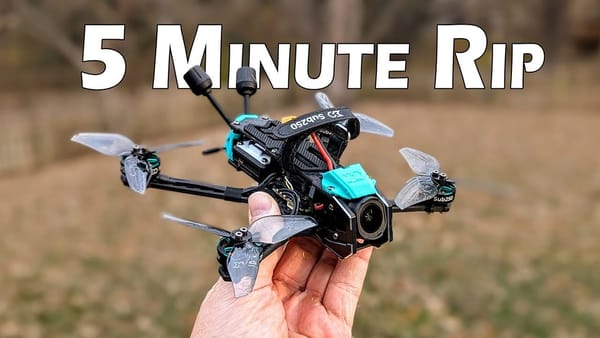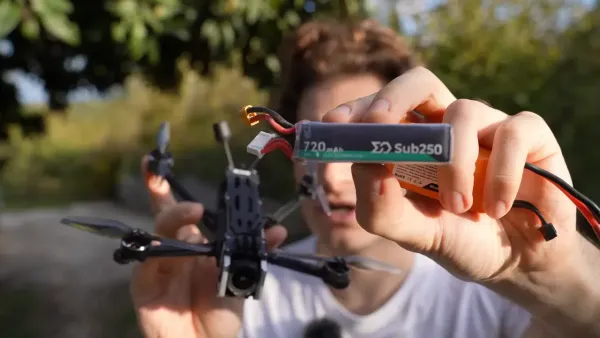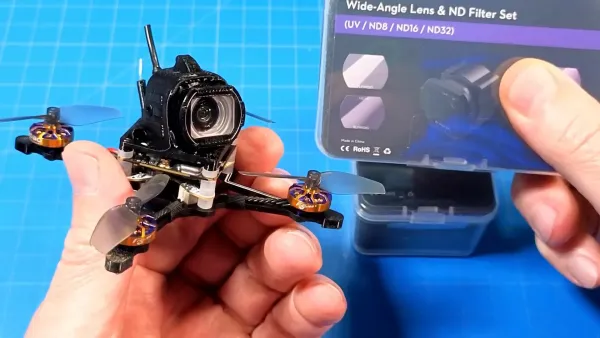Nick Burns is back with another deep dive into the world of FPV drones, focusing on the Meteor75 Pro O4. This tiny powerhouse, featuring the O4 camera and VTX, promises to elevate your whooping experience both indoors and out. With the Matrix 3-in-1 flight controller at its core and some impressive BetaFPV specs, there's a lot to unpack. Let's dive in!
Indoor Slow Flight
Starting indoors, Nick takes the Meteor75 Pro O4 for a spin. Despite a broken wrist, he's back on the controls, albeit at a slower pace. The OSD from Betaflight and the DVR goggle view provide insight into the flight experience. Nick mentions a peculiar video aberration near the stairs, something not observed in other O4 units. Battery performance is highlighted, with the BetaFPV Lava 550 offering about 4 minutes and 20 seconds of flight time.

Indoor Slow Flight RS On
With RockSteady on, Nick notices jitter in the footage, a common issue with the Meteor75 and other O4 quads. He experiments with canopy tension and MIPI cable positioning, trying to smooth out the video. Despite efforts, achieving stable footage remains challenging. This segment underscores the intricacies of fine-tuning FPV setups.

Outdoor Slow Flight No RS
Taking the Meteor75 outside, Nick faces cold weather and snow. With RockSteady off, he documents flight dynamics in different yard areas, considering wind and sun angles. The conditions are less than ideal, with temperatures at 28°F and winds at 8 mph. Despite these challenges, the Meteor75 demonstrates resilience, though external factors like wind and lighting play significant roles.

Outdoor Slow Flight RS On
Turning RockSteady back on outdoors, Nick explores video settings on-screen. He emphasizes the importance of personal verification of settings through visual evidence. Despite RockSteady's promise, results are mixed, with wind affecting stability. The segment highlights the need for potential PID tuning and camera mounting tweaks to enhance performance.

Desk Review
Back at the desk, Nick dissects the Meteor75's camera mount, showcasing its assembly and potential for movement. He notes the challenge of adjusting camera angles and the impact of canopy positioning on video clarity. Discussions with BetaFPV reveal no direct canopy contact, prompting further experimentation with screw tension. Nick also addresses community feedback on the O3 Lite's durability, suggesting potential improvements in future iterations.

Outtro
Concluding, Nick reflects on the Meteor75's versions and pricing, noting the option to purchase with or without the O4. He advises potential buyers to consider local vendors due to holiday delays from Far East manufacturers. Despite current limitations, Nick plans to revisit the Meteor75 post-cast removal, aiming to test its full potential.
FAQ
- What is the flight time for the Meteor75 Pro O4? The recommended BetaFPV Lava 550 battery provides about 4 minutes and 20 seconds of flight time.
- Does RockSteady improve video quality? Results are mixed; while it aims to stabilize footage, external factors like wind can still cause jitter.
- Can I fly the Meteor75 in windy conditions? It's best suited for calm conditions or areas with wind-breaking structures.
- How does the camera mount affect flight? The mount allows for some camera movement, impacting video clarity. Adjusting canopy tension can help mitigate this.
This article was based from the video Meteor75 Pro O4 // New O4 Outdoor Whooping



